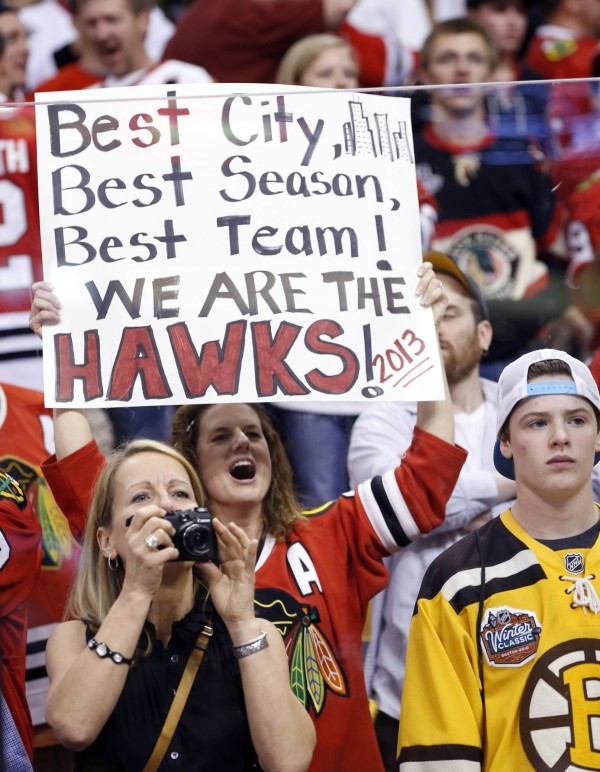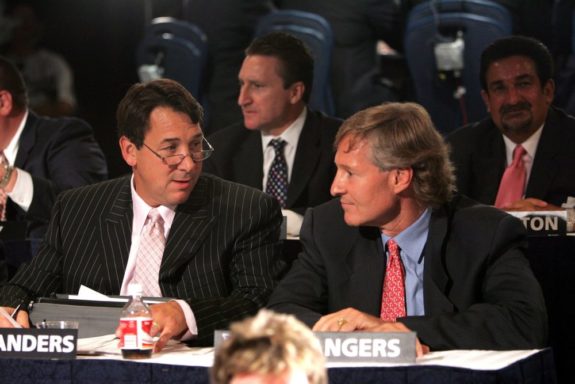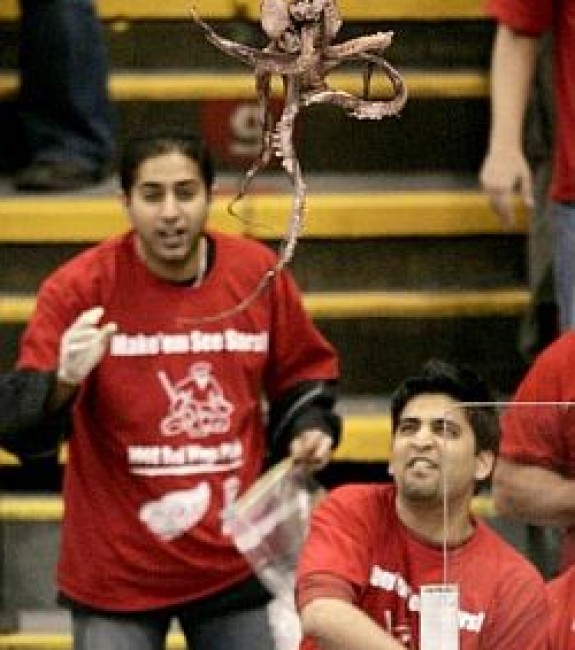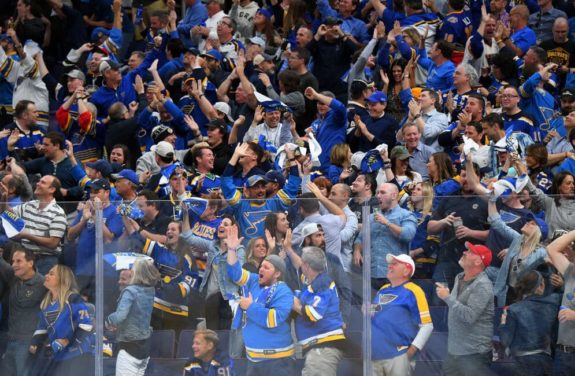A crowd full of hockey fans can be both exciting and terrifying at the same time. Catch them when their team is winning a game and it’s an experience in itself. If you find yourself in the cheap seats when the team is losing, you might hear some vocabulary you won’t want to bring home to your mother. Then again, I’ve seen my mother heckle opposing players with the same chants and cheers, so I guess it’s just a trait that runs in my family.

While I have definitely heard my fair share of not so nice things said about Sidney Crosby, the New York Rangers, and Philadelphia Flyers (I’m a New Jersey Devils fan, so if you frequent Devils home games you might know the exact chant I’m referencing), I’ve rarely seen someone cross the line. For the most part, the fun is harmless — R-rated, but harmless. Even though we NHL fans can keep our cool for the most part, some other leagues aren’t as lucky.
Rough & Rowdy Court Side
Just last week, the NBA announced that it would be enacting a zero tolerance policy for fan behavior. The policy, pushed by players, comes off of a season where the NBA had a number of high-profile instances of fans misbehaving court side. Notable examples include several players being on the receiving end of racist taunts. Not all were simply verbal. The most high-profile fan incident of last season happened during the NBA finals when a minority owner of the Golden State Warriors shoved Kyle Lowry of the Toronto Raptors from his court-side seats.
Even though the NBA won’t give exact numbers, the amount of cases that resulted in fan ejections is believed to be rather small. Still, they cite unruly fans as a growing concern throughout the sports world. They used European soccer as a specific example to justify their concern.
But What About in the NHL?
The NHL certainly isn’t immune from such fan behavior. In recent memory, an incident where fans in Chicago taunted Washington Capitals player Devante Smith-Pelly with taunts of “basketball” comes to mind. The guilty fans received a ban from United Center in Chicago, mirroring such punishments handed down for similar transgressions in the NBA.

The physical altercations don’t happen much in the NHL. I’m no expert on fan security, but it might have something to do with the 12-foot Plexiglas surrounding the rink. That doesn’t stop fans on the other side from trying to get everything from pucks to negative reactions from the players on the other side of the ice. The penalty box is a popular spot for opposing fans to tell players the opposite of “good game, buddy,” if you catch my drift. Plexiglas can only do so much and that barrier can get broken, quite literally.
It Wasn’t Always Like This
One of the most infamous, yet legendary, stories throughout hockey was Mike Milbury’s shining moment in the NHL. Of course, that was the night at Madison Square Garden that himself and a few teammates engaged in what Doc Emrick would call “extracurricular actives” (i.e. a fight) with some less-than-gracious fans in the stands. Long story short, fan reaches over glass to hit player with program, players don’t like that, fans steal stick, and the line between hockey bench and player seating became blurred and Milbury beat someone with their own shoe. That’s what he should be remembered most for instead of trading away Zdeno Chara and decimating the New York Islanders.

Interestingly, the hockey glass has some roots in fans behaving badly. In the olden days, stadiums used chicken wire to protect fans from pucks, before moving to see-through glass. Although there’s no real timetable, stadiums such as Chicago made the move in the 1940s. Then-NHL referee Bill Chadwick preferred the glass, as he said the old chicken wire system allowed fans to be able to reach through and poke him with various objects. Chicken wire was used even as late as the 1970’s when WHA teams played in sub-par arenas.

One thing the glass doesn’t stop is things that are thrown over it. NHL fans have a long history of throwing things on the ice. Some things, such as octopi in Detroit, are not only customary, but expected by the arena staff. That tradition has been both adopted and adapted with the catfish thrown on the ice in Nashville. Not everything is free game to be thrown, especially in the midst of fan frustration. Most arenas will unscrew bottle caps from drinks so they cannot be thrown on the ice. Philadelphia Flyers fans famously tossed memorial bracelets for their late owner Ed Snider on the ice during the 2016 Playoffs.

Are NHL Fans that Bad?
I’ve said it before and I’ll say it again; hockey fans are a rare breed. They might curse like a sailor in a “Call of Duty” video game chat room, but very rarely does fan behavior make negative news as we saw with some cases in the NBA. For the best way to gauge NHL fan behavior, let’s compare it to the NBA’s new broad guideline for chants and taunting opposing players, as defined by the league’s Chief Security Officer:
“We’ve added any sexist language or LGBTQ language, any denigrating language in that way, anything that is non-basketball-related,” said Jerome Pickett, the NBA’s executive vice president and chief security officer.
“Anything that is not basketball related” seems way too broad. In a hockey scenario, my creative “Sidney Crosby drinks Michelob Ultra” taunt wouldn’t make the cut. While we can all agree that certain language shouldn’t be used at the family-friendly atmosphere of a game, you can’t force opposing fans to like opposing players. As long as their chants and cheers aren’t crossing a certain line, “anything non-sports related” might be a little too drastic.

For the most part, we hockey fans follow an unwritten code of conduct. There are exceptions to the rule here and there, but the NHL shouldn’t have a reason to concern and panic the way the NBA has. Then again, in the NBA fans (extremely rich fans, to be more specific) can sit on the actual court. In the NHL, the protective fish bowl glass helps.
While hockey fans may not always act like boy scouts, the NHL shouldn’t be worried about us. While not everything that happens on the other side of the glass is G-rated, fans know what they’re getting themselves into. There’s some things better left said in the cheap seats and not to your mother, if you know what I mean. After all, it’s a hockey game, not Disney World.